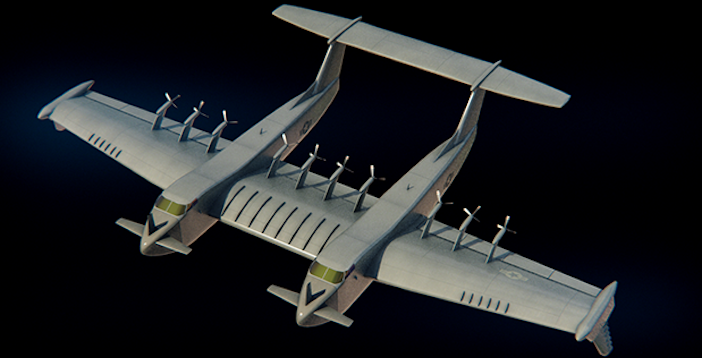The US Defence Advanced Research Projects Agency has launched Liberty Lifter, a research program to develop a military transport sea plane capable of lifting very large heavy loads over long distances.
The goal of the Liberty Lifter program is to develop a “long-range, low-cost X-plane” with better manoeuvrability and operational capabilities than existing transport aircraft.
The dual-hulled aircraft would not require a runway and will use the wing-in-ground (WIG) effect, a concept used by Soviet-era aerospace engineers in the 1980s to develop large cargo sea planes. WIG was later investigated by Defence Advanced Research Projects Agency (DARPA) and Boeing engineers in the USA.
As reported by IEEE Spectrum, DARPA are offering up to US$15m for two initial concepts, in the hope that at least one will pass a system-level critical design review by 2025. The first flight for a prototype Liberty Lifter could begin as early as 2027.
An initial request for information was published by DARPA for the Liberty Lifter last year.
The WIG effect is an aerodynamic principle whereby drag on an aircraft’s wings is reduced when close to a fixed surface, either at sea or over land. The altered airflow provides lift to the craft, allowing it to hover for long distances, even when travelling below climbing speed.

Alexander Walan, Liberty Lifter program manager at DARPA said, “This first phase of the Liberty Lifter program will define the sea plane’s range, payloads, and other parameters. Innovative advances envisioned by this new DARPA program will showcase an X-plane demonstrator that offers warfighters new capabilities during extended maritime operations.”
The added fuel efficiency the WIG phenomenon enables will be pivotal for the Liberty Lifter program. Specifications for the aircraft include a range of over 7,500km (4,660 miles), with payloads more than 100 tons.
Alongside the DoD’s travel and payload demands, the concept(s) will be required to demonstrate high sea state take off/landing, extended out-of-ground effect flight capability/obstacle avoidance and low-cost manufacturing techniques and design choices.
The announcement comes shortly after the launch of DARPA’s Control of Revolutionary Aircraft with Novel Effectors (CRANE) program, in partnership with BAE Systems and Georgia Tech Research Corporation.




